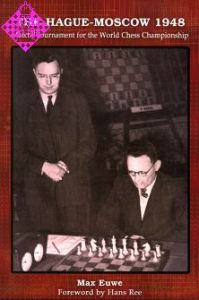The Chess Cafe Puzzle Book 2
274 pages, paperback, Russell Enterprises, 1. edition 2008
Improve Your Positional Intuition!
While there are many books and software programs available to assist chessplayers in improving their tactical ability, there are relatively few that focus on strategic and positional considerations. Working through these positions and exercises is a great way to improve your positional understanding.
Introduction Why is it so much easier to find books that focus on tactical exercises rather than positional tests? One reason is that it is easier to locate suitable examples of tactical combinations - at least for me. Moreover, the computer can be used to check the accuracy and uniqueness of the solution. With positional exercises, different computer programs may favor different moves and completely disagree about the evaluation of a given position. This is, of course, never the case when a clear-cut tactical solution exists. In a way, this problem is similar for humans, making it difficult to find examples with unique positional solutions. Therefore, in the tests offered in this book, when I think that different moves also deserve points, I have mentioned these as well.
I suggest that you begin with the introductory chapters of motifs, but you can, of course, start with the exercises as a warm up. If you are able to solve them quite quickly, then you should turn to the tests. You cannot expect to solve the puzzles on positional grounds alone. Positional motifs do not exist in a vacuum and concrete calculation almost always plays a role. So use your intuition to judge how far you must calculate to get full scores. Sometimes it is sufficient to find the first move, at other times you must calculate several moves ahead to ensure that your idea really works. Themes like "counterplay" or "opening the position" tend to be more tactical of course, but do not make your decisions on these grounds alone. Always let your intuition be your guide in any given position. You should repeat the tests after some time to train your memory and to recognize the patterns more readily. I hope that after studying this book, you will look at positional matters afresh, e.g. evaluate each exchange of a piece carefully (this problem is extremely important, believe me), look at the plans and ideas of your opponent and add the positionally desirable move to your list of candidates before you start calculating variations.
Many thanks to Hanon W. Russell for adding many explanations, Susan Polgar for her foreword, Mark C. Donlan, Helene Romakin, Nikolas Lubbe and Steve Goldberg. Special thanks to Jacob Aagaard for testing the exercises.
I wish you plenty of fun with the puzzles and I hope that your overall performance improves!
Karsten Müller
Hamburg, May 2008
| Weight | 400 g |
|---|---|
| Manufacturer | Russell Enterprises |
| Width | 15.3 cm |
| Height | 22.8 cm |
| Medium | Book |
| Year of Publication | 2008 |
| Author | Karsten Müller |
| Language | English |
| Edition | 1 |
| ISBN-13 | 9781888690439 |
| Pages | 274 |
| Binding | paperback |
004 Foreword
004 Signs & Symbols
005 Introduction
006 1. Motifs
006 Good and Bad Bishops
012 Domination
017 Outpost
023 Undermining
026 Opening the Position
029 Blockade
031 Improving Piece Placement
037 Prophylaxis
041 A Second Front
045 Counterplay
048 Positional Exchange Sacrifice
052 Simplification
058 Weaknesses
066 Weak Color Complex
072 2. Tests
153 Exercise and Test Solutions
274 Score Chart
275 Bibliography








